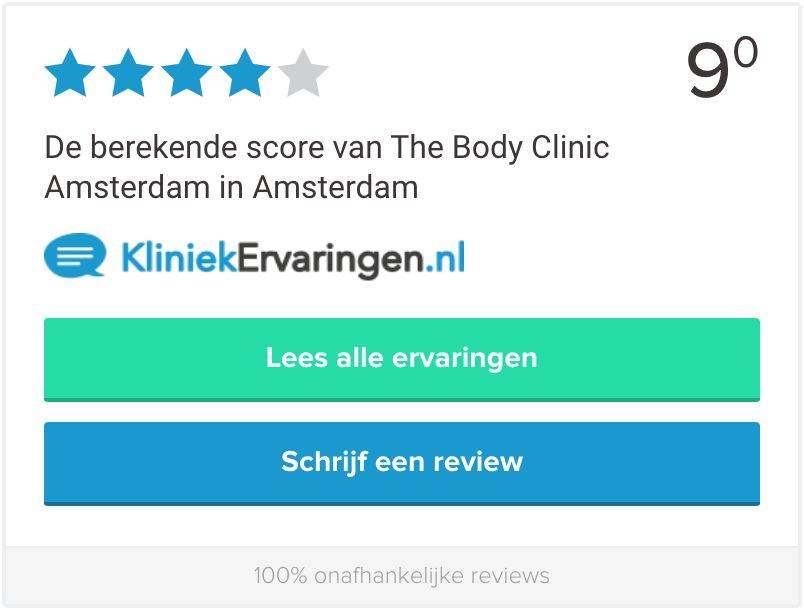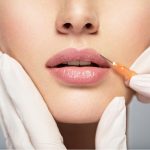What is Botox?
Botulinum Toxin(Botox) is a neurotoxic toxin produced by Clostridium Botulinum (a bacterium) that must be handled with extreme care. The poison mainly affects the nervous system and muscle function. The beauty of Botulinum Toxin is that we can use this poison to our advantage by using it in very small doses.
Strongly diluted
Botulinum Toxin is so toxic that with 1 Gram of pure Botulinum Toxin you could make about one million people dead sick. It is important to know that the Botulinum Toxin used in cosmetic treatment is highly diluted so that it is one hundred percent safe for use. The dilution of Botulinum Toxin is done in specialized laboratories and is an extremely precise process.
Tip: Even though there are very strict controls on Botulinum Toxin, it is wise to always check with a doctor about the products he or she uses. Also, I always advise people to seek treatment only at a reputable clinic by an experienced doctor.
Applications of Botox
In medicine, Botulinum Toxin is often used for nerve and muscle twitching. About twenty-five years ago, it was discovered that it can also have an aesthetic effect. The aesthetic world recognized that the paralysis aspect could have a positive effect on reducing facial wrinkles (source: A clinical study of facial wrinkles affected by facial expression muscles treated with botulinum toxin(Botox®) [1]). From then on, Botox was also used in cosmetics. By allowing muscles to relax, wrinkles can disappear or be prevented.
Botox is a brand name
Botox is a brand name for the substance Botulinum Toxin. Botox is popularly used for all brands of Botulinum Toxin, however, there are other brands in the market besides Botox that release Botulinum Toxin such as Azzalure, Bocouture and Dysport.
Botulin bacteria may also be found in food
Botulinum bacteria (Latin: Clostridium botulinum), which live particularly in the sludge of puddles and ditches, can occur in food that is not properly sterilized or improperly preserved. In food-related Botulinum Toxin poisoning, the first symptoms usually occur about 12 to 72 hours after infection; which can last up to 8 days. The first symptoms are:
- worse vision
- bad swallowing
- difficult to talk
After the initial symptoms, progressively spreading paralysis may develop. If it spreads to the respiratory muscles, the patient will need to be ventilated to survive (RIVM, Botulism, 2019). According to Toxicologist Marjorie van Duursen, Botulinum Toxin is one of the most toxic substances in the world. If you ingest too much of it, it paralyzes your muscles and can kill you.
Subtypes of Botulinum Toxin
There are a total of seven subtypes of Botulinum Toxin, two of which are available as drugs namely Botulinum Toxin A and B. In a Botox treatment in a cosmetic clinic, Botulinum Toxin A is used (source: Botulinum toxin (Botox) A for reducing the appearance of facial wrinkles: a literature review of clinical use and pharmacological aspect [2]).
Botox in powder form
At the clinic, Botox comes in glass vials in powder form. By providing Botox in a powder form, it has a longer shelf life. The Botox is liquefied before each treatment by mixing the powder with sodium chloride (saline solution), as powder cannot be injected. The manufacturer specifies the dosage with this, so the concentration is always the same.
Then the very dilute Botulinum Toxin is injected into the muscle causing the wrinkles. After an average of 5-7 days, the Botox begins to take effect, temporarily interrupting the connection between the muscle and the nerve. As a result, the muscle and nerve can no longer communicate with each other and the muscles relax.
For this reason, Botox is used to counteract signs of aging.
Applications of Botox in the clinic
At the clinic, we use Botox in a wide variety of treatment:
- Wrinkles
Because the muscles in the skin are no longer (fully) tightened after a Botox treatment, wrinkles such as: frown lines, forehead wrinkles, crow’s feet, etc. disappear. - Gummy smile
Seeing visible gums while smiling is also called a gummy smile. If you prefer not to have this, a few pricks in the gums are enough to cause the muscles that pull up the upper lip to relax. - Migraine
People with chronic migraines can benefit greatly from Botox treatment. By decreasing the muscle tension in the forehead, the headache can be reduced. Source: Migraine and botulinum toxin. [3] - Excessive sweating
sweat production decreases by injecting Botox into the armpits. Botox breaks the connection between the sweat glands and the nerve, thereby decreasing sweat production. Source: ‘Doctor, I sweat too much’: hyperhidrosis in practice. [4] - Teeth grinding
injecting Botox into the jaws decreases muscle tension and can reduce teeth grinding. Source: Treating severe bruxism with botulinum toxin. [5] - Acne
Botox can reduce sebum production in the skin which can cause acne Source: Cosmetic dermatology. [6]
The effect of Botox
The qualified physician treating you will initially look at muscle strength and the desired effect. One muscle needs a higher dose than another muscle. Should the effect not be optimal, the doctor can always give you additional treatment.
The duration of action of a Botox treatment varies from person to person, but on average it is 4-6 months. There are also other factors that can affect the duration of action of Botox. Consider:
- Fast metabolism
- Smoking
- Alcohol or drug use
- Many sports
- Too much sunlight
- Hormonal changes
You will, if treated with Botox more often, find a balance over time as to which dosage works effectively for which muscle. Be advised by a qualified physician at all times.
Even though Botulinum Toxin bacteria is one of the most toxic substances, if used by a qualified physician and according to the correct dosage, it can bring about good results. The poison does not destroy tissue; it is merely a blockage between the nerve and the muscle. This effect is temporary. After about 4-6 months, the muscles function fully normally again.
About Us: The Body Clinic
The Body Clinic has been a leading clinic in injectables in the Netherlands for 15 years. We specialize in Botox and Filler treatments, skin improvement and skin rejuvenation and as best tested by the Consumers’ Association and with a 9.0 and 2,000 reviews the best rated clinic on Kliniekervaringen.nl. Our doctors have been working at The Body Clinic as cosmetic doctors for 15 years. The doctors at The Body Clinic are BIG registered, members of NVCG and cosmetic doctor KNMG.
Making an appointment
If you would like to make an appointment for a consultation or treatment, please contact us. We have a clinic in Amsterdam and in the Arnhem region (Duiven). You can make an appointment online or call 020-4638668 or reach us by email [email protected].










